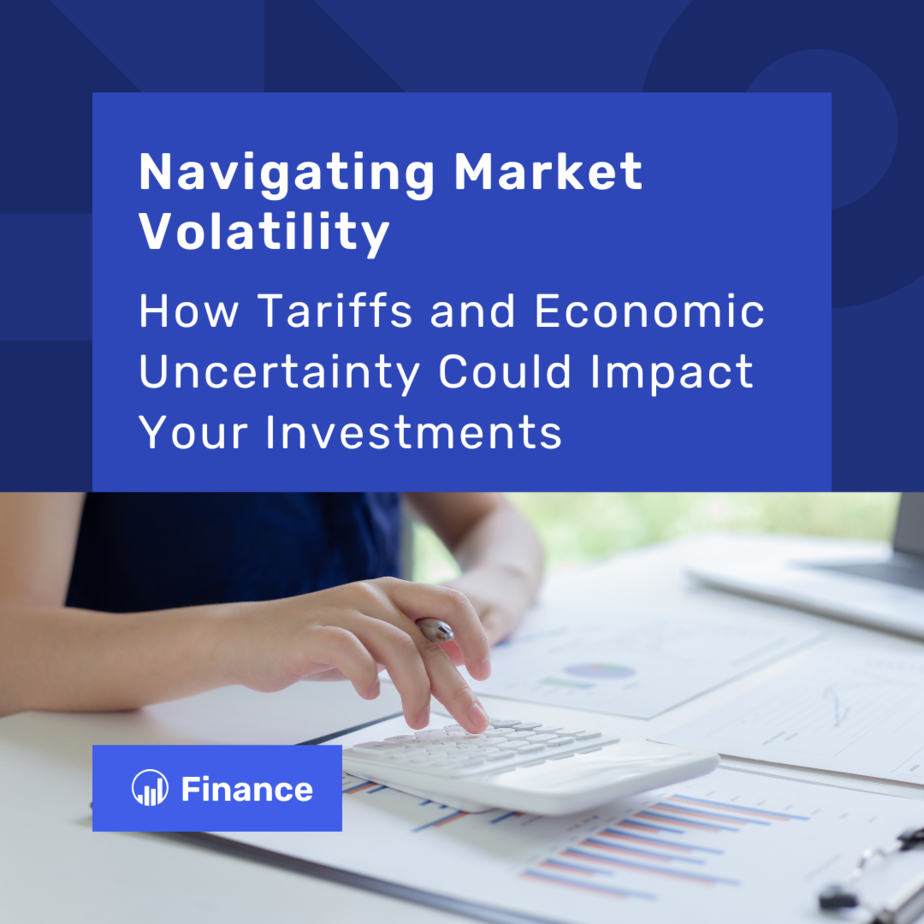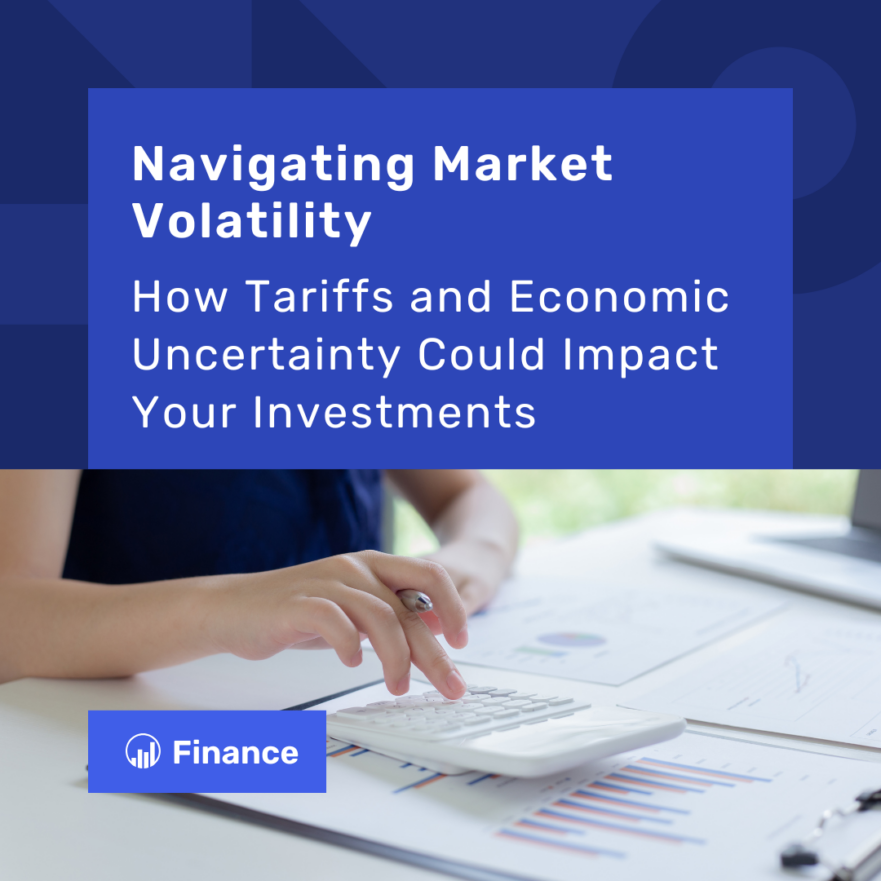
We’ve been seeing news about the stock market decline. Here are my thoughts on the current environment.
The news will likely say the catalyst for the market reaction was the announcement of various tariffs taking effect in the next week on just about every foreign trading partner of the U.S. But the equity market was already showing some signs of weakness before the announcement yesterday and this just served as another reason for repricing of stock valuations. But it could lead to a greater repricing.
In its simplest form, a tariff is a targeted tax on imports. The cost of buying something from a foreign supplier that has a tariff on it will mean the buyer will have to decide if they want to absorb the extra cost – and therefore have lower profits – or pass that increase on to the consumer. Some large companies can absorb a portion, but many smaller companies can’t take that hit and simply pass on the cost increase – potentially leading to higher prices – and a rise in the level of inflation.
The goal of tariffs is to make foreign goods more expensive so that an economy will begin to rely more extensively on domestic producers/ manufacturing. But economies are like oil tankers in that they don’t turn quickly. So, in the near-term tariffs mean higher costs and lower profits for any company that relies on foreign goods and services for supplies and elects not to pass on these higher costs.
The big problem with all of this is that 30 years of offshoring/ globalization has resulted in both large and small companies relying on foreign companies for parts and services. Put another way, practically no company produces something from start to finish domestically. Large companies like Ford or Apple rely on literally thousands of different companies to supply them with the parts that go into their products. Even retailers like Target or Walmart have thousands of (sometimes) smaller suppliers from which they source their inventory.
In the long term (think years) the objective of the implementation of higher tariffs could lead to a rebalancing of this global trade cycle, recreating a more robust domestic manufacturing industry for all kinds of goods. But there are a lot of bars to jump over to achieve that goal. Many parts of the country that many years ago produced finished goods have fallen into economic despair and the factories that existed have either been redeveloped or declined to a point where they are not usable. Then there’s the challenge of finding and training a capable workforce to man those factories, at a rate that will make the finished products competitive in the marketplace. Not an easy fix for sure.
But, turning back to the near term, the initial reaction by the investment markets to the tariff news was decidedly negative. Part of that I believe is attributable to the markets belief that the President would back off from implementing some of the more onerous tariff threats. He didn’t. Another reason for the sharp decline today was due to the continued level of uncertainty in policy. The investment markets can handle good news, or bad news. They just reposition as necessary. What they really don’t like is uncertainty.
Some of the larger issues and uncertainties:
- Are these tariffs certain or will the Trump administration walk back some of them?
- How will foreign nations respond?
- How much more expensive will things become in the near-term?
- Will U.S. corporations raise prices, eat the costs, or some combination of both? And most importantly…
- Can the U.S. consumer absorb the increase in costs?
I don’t have answers to those questions. No one does.
But if the uncertainty continues long enough, we could talk ourselves into an actual recession.
The economic data in the U.S. was already trending the wrong way before the tariffs were introduced. The ISM Manufacturing Survey is a survey of managers at 400 different industrial companies located throughout the United States. It’s one of the most important economic data points there is as it represents the closest thing to a real-world measure of what’s happening on the frontlines of the economy.
The latest ISM Manufacturing Survey for March was not good. The survey reading fell to 49, which is a reading normally seen in recessions. New orders, which measure new business fell to 45, which is also into recessionary territory. And worst of all, Prices Paid, which measures the prices firms are paying for goods and services jumped higher to 69. Add it all up, and this survey is hinting that an inflationary recession could be on the horizon.
Now, some of the data is likely the result of companies trying to “front-run” what was coming from the Trump administration. After all, if you’re in charge of placing orders for a large corporation and you know tariffs are coming, wouldn’t you move to acquire as many goods and services as possible before the prices increase due to tariffs? However, front-running aside, the fact is that the data was going in the wrong direction prior to the tariffs. As I mentioned earlier, economies are like oil tankers: they don’t maneuver rapidly. And the positive outcome of Trump tariff plans, whatever they are, will take months, if not years, to unfold.
Consumers will be the key to whether we actually see a recession or not. The U.S. economy is driven by consumer spending. It makes up over 70% of the annual growth of GDP. Americans like to buy stuff. But if the investments in their 401k are declining in value, even though those aren’t funds they use for current spending, the negative impact of “feeling” less well off, tends to bleed into the impulse for current spending habits. If consumers decide to put off spending because their retirement accounts are down, then a recession could really be in our future.
So, what does all this mean to your investment portfolio?
As the market evolves in the coming weeks and prices in the changes that are likely to come from ongoing negotiations between the U.S. and other nations, the level and extent of the tariffs could be quite different than today. As those changes filter into the investment markets, we plan to be ready to take advantage of any opportunities presented that offer us the opportunity to add to great industries at attractive valuations for long-term benefit.
As always, we value the trust you have placed in us and will continue to strive to be worthy of that confidence.






